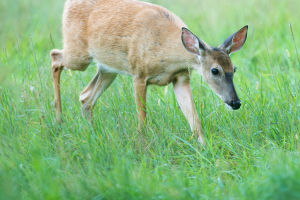The Saffron Finch (Sicalis flaveola), a vibrant bird native to South America, is renowned for its striking appearance and melodious song.
Beyond its aesthetic and auditory allure, the reproductive characteristics of the Saffron Finch offer fascinating insights into avian biology and behavior.
From courtship rituals to nesting habits, understanding these reproductive traits sheds light on the species' survival strategies and ecological role.
One of the most captivating aspects of the Saffron Finch's reproductive behavior is its elaborate courtship display. During the breeding season, male Saffron Finches engage in intricate courtship rituals to attract a mate.
These displays often involve aerial acrobatics, where males flutter and glide gracefully through the air, showcasing their agility and vitality. Additionally, males sing complex songs characterized by trills, warbles, and chirps, serenading potential partners with melodic tunes.
These courtship behaviors demonstrate the male's fitness and vigor, establish pair bonds, and reinforce social bonds within the breeding population.
Once a pair bond is established, Saffron Finches build their nest, a crucial aspect of their reproductive strategy. Saffron Finches are cavity nesters, meaning they construct their nests in natural or artificial crevices, such as tree hollows, rock crevices, or artificial structures.
The female takes the lead in nest construction, using various materials, including grasses, twigs, feathers, and other plant matter, to fashion a cozy and secure nesting site. The male assists in gathering nesting materials and defending the nesting territory, ensuring the safety and comfort of the brood.
After the nest is constructed, the female lays a clutch of eggs, typically between two to five eggs, depending on environmental conditions and food availability. The eggs are incubated by both parents, who take turns sitting on the nest to regulate temperature and humidity levels.
Incubation periods vary but generally last around 12 to 14 days. During this time, the parents diligently tend to the eggs, protecting them from predators and ensuring their survival.
Upon hatching, the Saffron Finch chicks are altricial, meaning they are born helpless and dependent, requiring constant care and nourishment from their parents.
Both parents play active roles in feeding and caring for the chicks, regurgitating food into their gaping mouths to provide essential nutrients for growth and development. The chicks proliferate under the attentive care of their parents, quickly gaining strength and mobility.
As the chicks mature, they begin to fledge or develop the ability to leave the nest and explore their surroundings. Fledging typically occurs around 12 to 14 days after hatching, although this timeline can vary depending on environmental factors and food availability.
Once fledged, the young Saffron Finches continue to rely on their parents for food and guidance as they learn essential survival skills, such as foraging and avoiding predators.
The reproductive characteristics of the Saffron Finch offer a fascinating glimpse into the complex world of avian biology and behavior.
From elaborate courtship displays to meticulous nest construction and parental care, every aspect of the Saffron Finch's reproductive strategy is finely tuned to ensure the survival and success of the species.
By studying these reproductive traits, we gain valuable insights into the evolutionary adaptations and ecological interactions that shape the lives of these charismatic birds.







